For those not familiar with coast redwood measuring, there are mainly two methods employed. One involves a climber going to the top and dropping a tape to the ground. The second method is using a laser rangefinder from the ground. Sometimes a climber can’t drop the tape all the way and may also use a laser for part of the tree’s stem length. Back around 1995 to 2005, climbing and tape-drop was said to be the most accurate way to measure coast redwoods and verify new discoveries. But I believe this changed by 2010, after which Michael Taylor finally demonstrated what he and Chris Atkins achieved through coordinated effort and fine-tuned technique.
In 2011, a climbing team scaled a new world record pine discovery. We already knew it was over 268 ft., but the climbing team dropped a tape to verify it’s height. The difference between their tape-drop and Taylor’s laser measurement was 1 millimeter.
Over the years measuring hundreds of redwoods and other trees, Taylor and Atkins mastered exceptional accuracy. They use high end laser range finders and step-up the manufacturer’s calibration to even greater accuracy. The equipment is mounted on tripods for stability and a trigger cable is used to avoid vibration. Often, magnified scopes were also used, placing the cross-hairs on the tallest leader tip. These days, accuracy within an inch shouldn’t be a surprise when we have seen millimeter differences.
From a discovery stand-point, this means that the better discovery explorers can certify newly discovered trees in the redwood parks. And save researchers’ time plus having to jump hoops for climbing permits. And, because some recent discoveries are not disclosed, this keeps the locations much more discreet; no rangers; no movement of climbing gear; no champion tree representatives, etc..
Here are a few photos from measurement projects where the laser range finder was used. The men are Michael Taylor, Chris Atkins and Steve Sillett. One photo is the top of a coast redwood in the 350 – 390 ft. class. This is the first time I’ve shared that image. But those are the tallest tips seen through a “window” in the forest. All it takes is sighting the laser on the apex of each top to determine which is tallest. Note: the laser usually displays one step of the measurement. Rarely is a top and base visible from the same point for tallest redwoods. Several measurements are taken and added or subtracted for a total height.

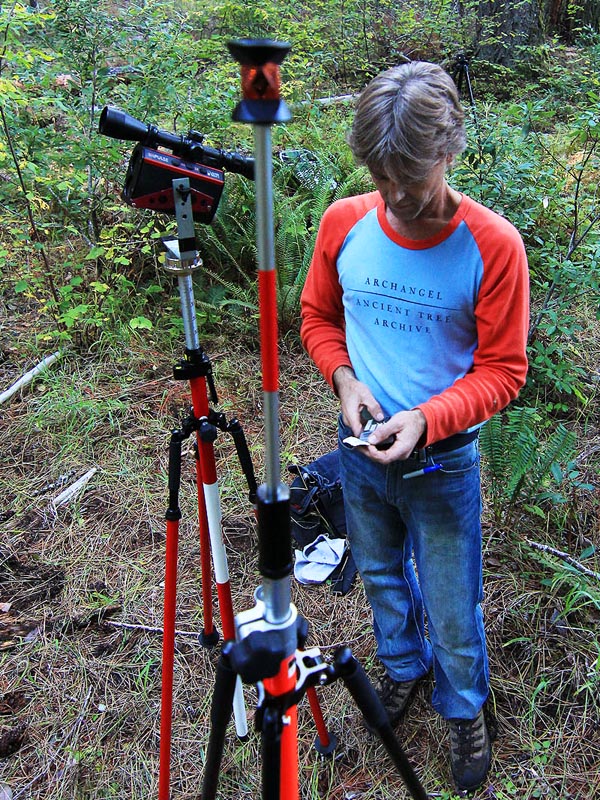
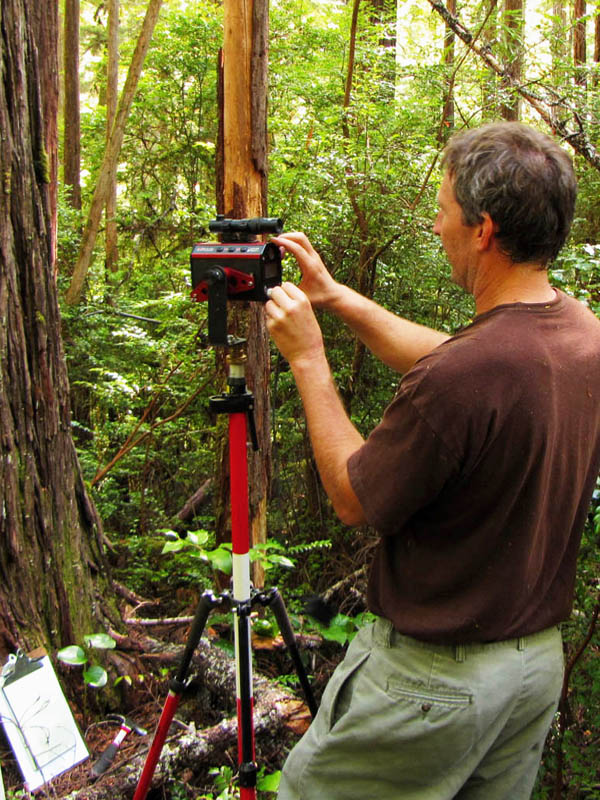
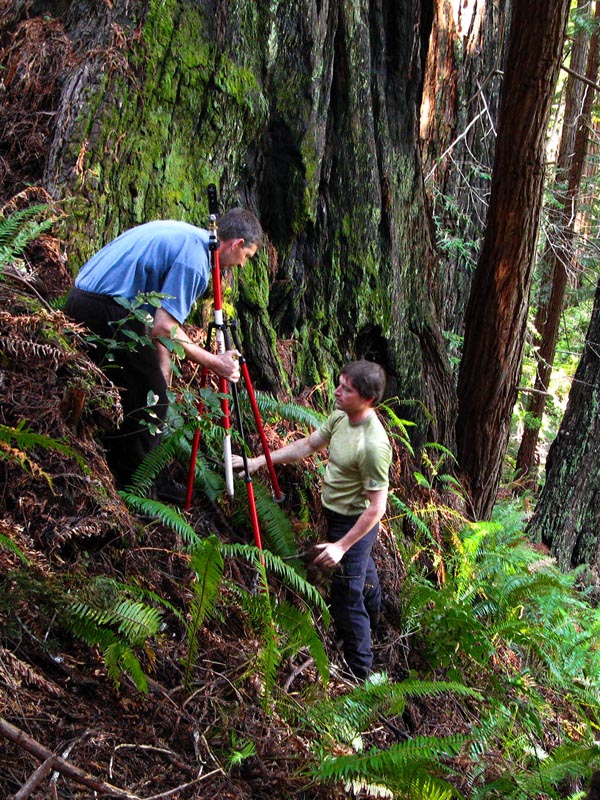
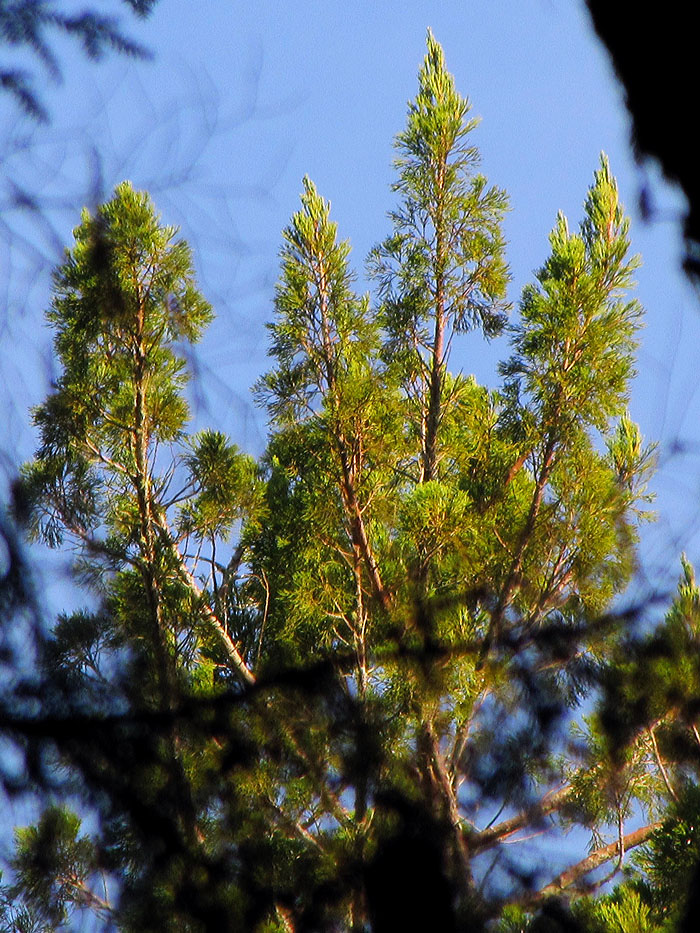
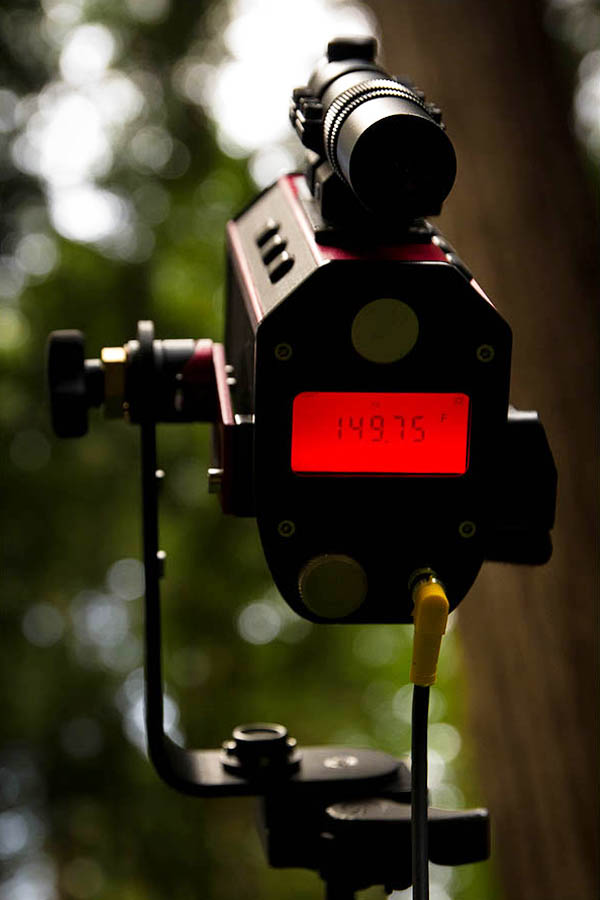
Recent Comments